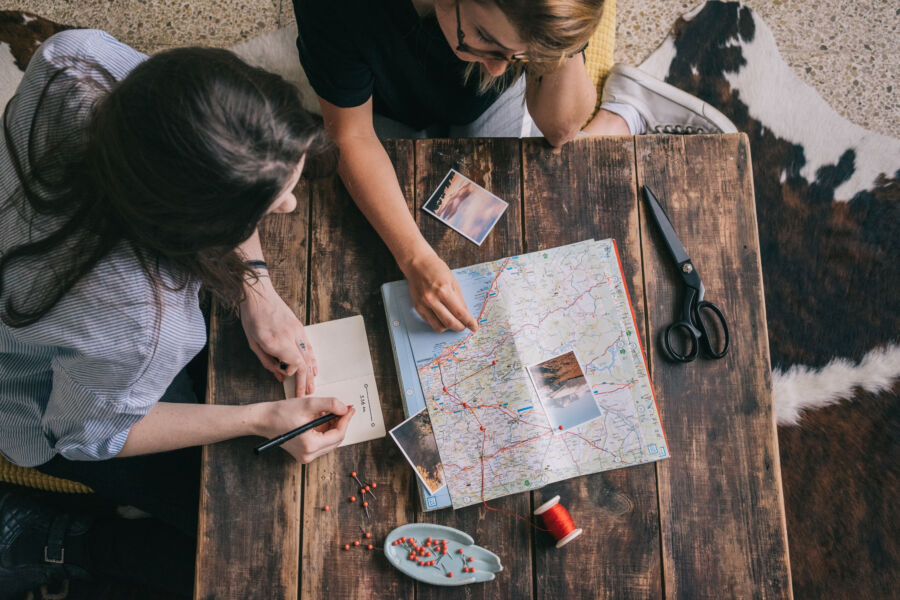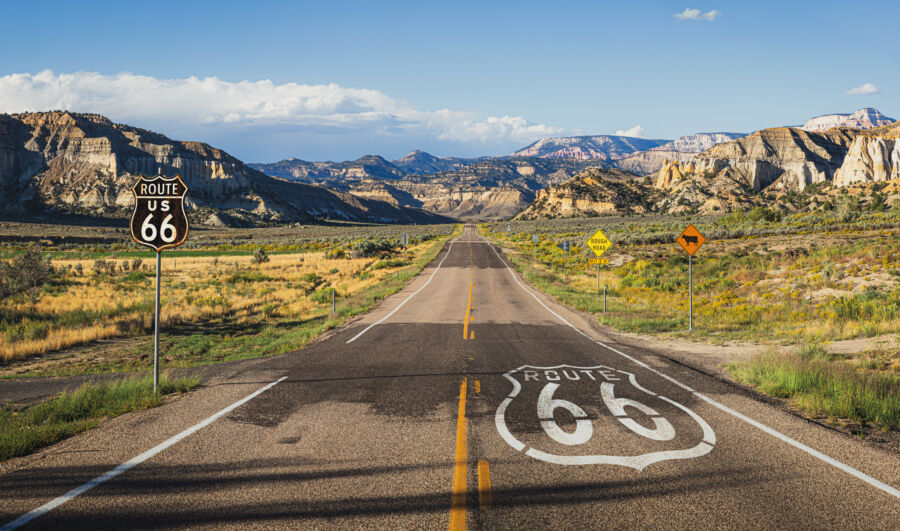
48 State Road Trip Cost: Affordable Adventure Under $5000
Planning a road trip across all 48 contiguous United States is an exciting adventure. But how much does it really cost? A 48-state road trip can range from $4,400 for a solo traveler to $5,600 for a family of four. This includes gas, food, lodging, and some attractions.
Your exact costs will depend on your travel style and choices. Are you camping or staying in hotels? Eating at restaurants or cooking your own meals? The length of your trip also plays a big role. A faster-paced journey of 2 months will cost less than a leisurely 6-month expedition.
Don’t let the price tag scare you off. With some smart planning, you can cut costs and still have an amazing time. There are many ways to save on food, gas, and lodging while seeing all the awesome sights America has to offer.
Contents
- Key Takeaways
- Planning Your 48-State Road Trip
- Determining Your Route and Itinerary
- Budgeting for Your Adventure
- Accommodations and Lodging
- Camping and Outdoor Stays
- Hotels and Motels
- Transportation and Gas Expenses
- Vehicle Preparation and Maintenance
- Fuel Cost Calculations and Savings
- Food and Groceries Budgeting
- Dining Out vs Cooking
- Managing Food Expenses on the Road
- Sightseeing and Attractions
- Must-See Landmarks across the States
- Cultural and Recreational Activities
- Keeping up with Responsibilities
- Handling Bills and Subscriptions
- Documentation and Record-Keeping
- More Travel Guides
Key Takeaways
- Planning ahead and budgeting carefully can help manage costs
- Choosing budget-friendly lodging and food options saves money
- Balancing paid attractions with free natural wonders keeps expenses down
Planning Your 48-State Road Trip
A 48-state road trip is a big undertaking, but with careful planning, you can make it happen. You’ll need to map out your route, plan your stops, and figure out how much it’s all going to cost.
Determining Your Route and Itinerary

Start by deciding which states you want to visit and in what order. You might choose to go clockwise around the country or zigzag across it. Route 66 and Highway 101 are classic choices to include. Don’t forget to leave room for spontaneity!
Make a list of must-see spots like national parks, big cities, and quirky roadside attractions. Yellowstone, the Grand Canyon, and New York City are popular picks. But don’t overlook lesser-known gems like Badlands National Park or quirky spots like the World’s Largest Ball of Twine.
Plan to spend more time in bigger states like Texas or California. You might just drive through smaller states like Delaware or Rhode Island. Aim for a mix of urban and rural experiences to get a true taste of America.
Budgeting for Your Adventure
A 48-state road trip can cost anywhere from $4,000 to $10,000 or more, depending on your style. Gas will be your biggest expense, around $1,000 for a fuel-efficient car. Food and lodging are the next big costs.
To save money:
- Camp or stay in budget motels
- Cook your own meals when possible
- Look for free attractions and activities
- Use apps to find the cheapest gas prices
Keep track of your spending as you go. It’s easy to lose track on a long trip. Set a daily budget and stick to it. Remember to budget for unexpected costs like car repairs or splurge meals.
Consider getting a National Parks Pass if you plan to visit several parks. At $80, it can save you a lot if you hit up 3-4 parks or more.
Accommodations and Lodging

Finding affordable places to stay is key to keeping your 48-state road trip costs down. You’ve got options ranging from free camping to budget motels to cozy vacation rentals.
Camping and Outdoor Stays
Camping is one of the cheapest ways to lodge on your cross-country adventure. Many national parks offer campsites for $20-30 per night. State parks are often even cheaper, with some sites as low as $10. For free camping, look into Bureau of Land Management areas or national forests.
Bring your own tent and gear to save big. A good quality 2-person tent costs around $100-200 upfront but pays for itself quickly. Don’t forget a sleeping bag and pad!
Some campgrounds have showers and bathrooms. Others are more rustic. Plan accordingly. And book popular spots early, especially in national parks during peak season.
Hotels and Motels
Budget hotels and motels are your best bet for affordable indoor lodging. Expect to pay $50-100 per night in most areas. Prices climb in big cities and tourist hotspots.
Look for deals on hotel booking sites or directly with hotel chains. Joining loyalty programs can unlock discounts and perks. Some offer free nights after a certain number of stays.
Consider vacation rentals for longer stops. They often work out cheaper than hotels for multi-night stays. Plus you’ll have a kitchen to cook meals and save on food costs.
Mix up your lodging to keep things interesting and budget-friendly. Maybe camp 3-4 nights a week and treat yourself to a comfy bed the other nights. Your wallet will thank you!
Transportation and Gas Expenses

Planning your gas budget and car costs is key for a successful 48-state road trip. Let’s look at how to prep your vehicle and save money on fuel along the way.
Vehicle Preparation and Maintenance
Before hitting the road, give your car a thorough checkup. Get an oil change, rotate the tires, and check all fluids. This can help prevent breakdowns and save you money in the long run. Budget about $150-$200 for basic maintenance before you leave.
Don’t forget to pack an emergency kit with jumper cables, a spare tire, and basic tools. It’s smart to sign up for roadside assistance too. AAA memberships start around $60 per year.
During your trip, plan for occasional oil changes every 3,000-5,000 miles. This might cost you $30-$60 each time. Set aside some cash for unexpected repairs too – maybe $300-$500 just in case.
Fuel Cost Calculations and Savings
Gas will likely be your biggest travel expense. To estimate costs, check your car’s MPG and the current average gas prices along your route. For a 10,000-mile trip in a car that gets 25 MPG, you might spend $1,600-$2,000 on gas.
You can save on fuel by:
- Using apps like GasBuddy to find the cheapest gas
- Avoiding premium fuel unless required
- Keeping tires properly inflated
- Removing excess weight from your car
Consider getting a gas rewards credit card to earn cash back on fuel purchases. Some offer up to 5% back, which can add up fast on a long trip.
Food and Groceries Budgeting

Eating well on a 48-state road trip doesn’t have to break the bank. Smart planning and a mix of dining out and cooking can keep you fed and happy without draining your wallet.
Dining Out vs Cooking
Eating out for every meal adds up fast. A typical restaurant meal might cost $15-25 per person. That’s $45-75 a day just on food! Cooking your own meals can slash that in half or more.
Stock up on easy-to-prepare foods at grocery stores. Think sandwiches, fruits, and snacks. Grab a cooler to keep things fresh. For hot meals, campgrounds often have grills you can use.
But don’t skip restaurants entirely! Local eateries are part of the travel experience. Budget for 1-2 restaurant meals a week to sample regional flavors.
Managing Food Expenses on the Road
Plan your meals ahead of time. Make a rough menu for the week and shop accordingly. This cuts down on impulse buys and food waste.
Look for grocery stores with good deals. Chains like Aldi or Walmart often have lower prices than fancy markets.
Pack a reusable water bottle and fill it up for free. Buying drinks adds up quick!
Use apps to find cheap eats. Yelp and Google Maps can point you to budget-friendly local spots.
Don’t forget about picnics! Parks and rest stops are perfect for enjoying a homemade lunch with a view. It’s way cheaper than a sit-down restaurant.
Sightseeing and Attractions

A 48-state road trip offers endless opportunities to explore America’s diverse landscapes and cultural treasures. You’ll encounter iconic landmarks and hidden gems that showcase the country’s rich history and natural beauty.
Must-See Landmarks across the States
No cross-country adventure is complete without visiting the Grand Canyon. This natural wonder will leave you in awe with its vast canyons and colorful rock layers. Plan to spend at least a day here, hiking the rim trails or taking a mule ride into the canyon.
Yellowstone National Park is another must-see. You’ll be amazed by its geothermal features, like Old Faithful geyser and the colorful hot springs. Keep your eyes peeled for wildlife – bison, elk, and even wolves roam freely here.
Don’t miss the Statue of Liberty in New York Harbor. It’s a symbol of freedom and a welcome sight for millions of immigrants throughout history. You can book a ferry tour to visit the island and climb to the crown for stunning views of the city skyline.
Cultural and Recreational Activities
Your road trip is a chance to immerse yourself in America’s diverse culture. In San Francisco, ride a cable car and explore the vibrant neighborhoods. Don’t forget to walk across the Golden Gate Bridge for breathtaking views of the bay.
New York City offers world-class museums like the Metropolitan Museum of Art and Broadway shows. You can reserve tickets to popular attractions in advance to avoid long lines.
For a taste of the South, visit New Orleans. You’ll love the lively jazz scene on Bourbon Street and the unique Creole cuisine. Try beignets at Café du Monde – they’re a local favorite!
Remember to budget for entrance fees and guided tours. Many national parks offer affordable annual passes if you plan to visit multiple sites.
Keeping up with Responsibilities

Road trips are fun, but you can’t forget about your regular bills and paperwork. Here’s how to stay on top of things while cruising across the country.
Handling Bills and Subscriptions
Set up auto-pay for your regular bills before you hit the road. This includes your phone bill, gym membership, and any subscriptions. Make a list of due dates and amounts, then schedule payments in advance.
For your travel budget, add a buffer for unexpected costs. You might need $50-100 extra per month for things like parking fees or toll roads. Don’t forget about your car insurance – make sure it covers you in all 48 states.
Consider pausing some services while you’re away. Netflix and other streaming services can eat up your data on the road. You could save $10-15 per month by putting them on hold.
Documentation and Record-Keeping
Keep all your travel receipts in one place. A simple envelope or folder works great. This will help you track your total spent and make tax time easier if you’re writing off any expenses.
Take photos of important documents with your phone. This includes your driver’s license, passport, and insurance cards. Store them in a secure cloud service for easy access.
Update your financial records regularly. Set aside 15 minutes each week to log expenses and check your bank balance. This will help you avoid overspending and keep you on budget.
Bring a small notebook to jot down mileage and gas costs. This comes in handy for budgeting future trips and claiming any tax deductions.



